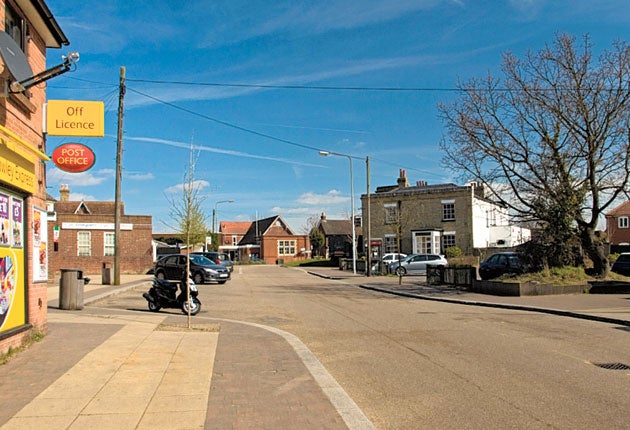Racist violence migrates to the country

Racism and xenophobic violence is flourishing in towns and villages across Britain – while inner city areas that were once hotbeds of racial violence are now more "at ease" with diversity, according to a new report.
Researchers at the Institute of Race Relations (IRR) analysed 660 racist attacks across Britain last year and found growing evidence to suggest that violence against minorities has shifted to rural areas and towns.
The IRR said hatred and bigotry had spread in less than a generation thanks to a broad spread of asylum seekers, migrant workers, overseas students and the movement of settled ethnic minority families. Prejudice was also being fanned, they concluded, by mainstream political parties competing with one another over which could cut immigration the fastest.
"What has emerged is that the map of violence has changed quite dramatically since studies were first done of such violence in the 1970s," the authors wrote.
"It is no longer poor, deprived areas of London such as Southall, Tower Hamlets, Hackney and Newham, which witnessed many of the racial attacks and racist murders a generation or two ago, that are now so prone to serious attacks. Not only are black and ethnic minority communities now more established there but also a whole history of struggle against racism has strengthened these communities."
They added: "But what was significant was that ethnic minorities in a whole host of cities, towns and areas, not traditionally associated with such violence, now appear to be experiencing it. These are areas which have traditionally been very white and are not affluent. In some cases, core industries have gone and a whole generation of young people are without a future."
The authors said minority ethnic groups, asylum seekers and migrant communities are bearing the brunt of these tensions. They found asylum seekers, newly-arrived migrant workers and people who look Muslim are most at risk of attack, while trades that isolate individuals, such as cab driving, serving in takeaways and staffing small shops were found to be the most dangerous. IRR researchers say at least 89 identifiably racist murders have taken place in Britain since Stephen Lawrence was killed while waiting for a bus in Eltham, south London, in 1993 – an average of five a year. Of the victims, 39 were Asian, 25 were black, four were white British and three were white eastern Europeans.
Lee Bridges, who analysed official crime statistics for the report, found that while racist attacks had decreased in London over the past decade, they have dramatically risen in proportion elsewhere.
In 1999/2000, London recorded 23,401 racist incidents, 49 per cent of the national total. By 2007/8 that number had dropped to 9,866, a 58 per cent reduction. Last year, Greater Manchester, West Midlands, West Yorkshire, Thames Valley and Lancashire accounted for 28 per cent of the national total, a 103 per cent increase on 10 years ago.
Case Study: Indian sailor died after attack by gang of 20 youths
Gregory Fernandes, a 32-year-old sailor from Goa in India, was walking back to the cargo ship he worked on in Fawley, Hampshire when he and a friend were set upon by a 20-strong gang of youths. It was October 2007. Mr Fernandes was his family's breadwinner. A passerby broke up the fight and drove Mr Fernandes to his cargo ship, but he dropped dead from a heart attack.
Police concluded that the attack, which took place in a normally quiet backwater of Hampshire, had clear racist overtones. The gang had been shouting "Paki" during the assault. In January 2008, the Fernandes family expressed concern at the police investigation and the failure to charge anyone in connection with his death. Three young boys were later charged with his murder. At their trial in February 2009, the three admitted lesser charges of manslaughter. In March 2009, Stephen Pritchard, 18, Daniel Rogers, 18, and Chay Fields, 16, were sentenced to six-and-a-half years. A 15-year-old boy admitted GBH on Mr Fernandes' friend and was given a 12-month detention and training order. Another 15-year-old who admitted assault was given an 18-month supervision order.
Bookmark popover
Removed from bookmarks